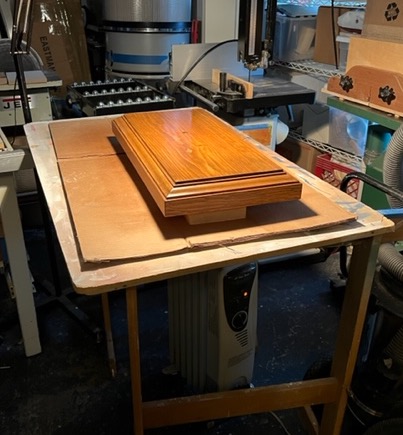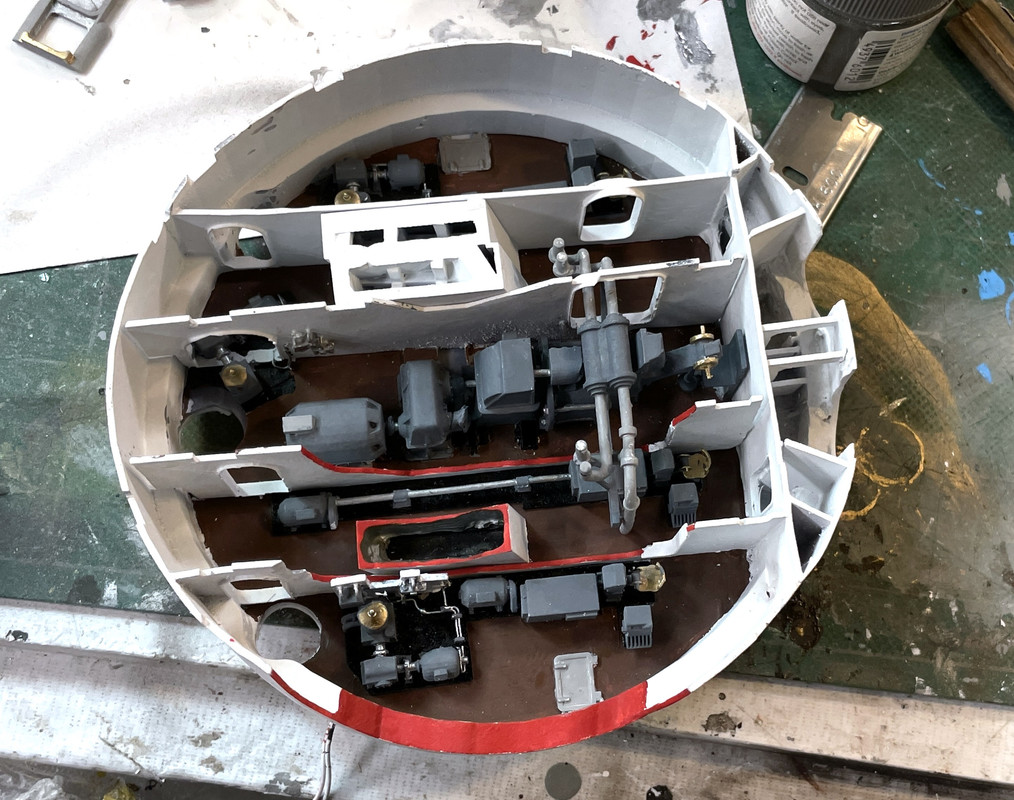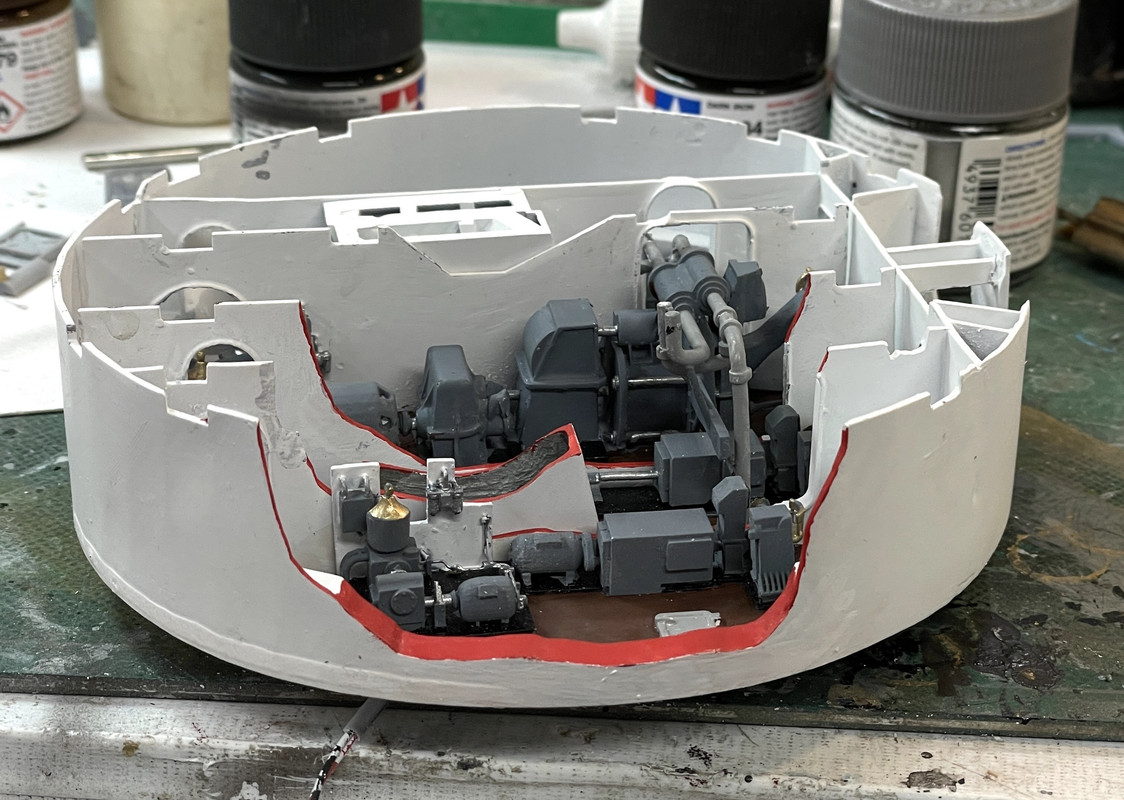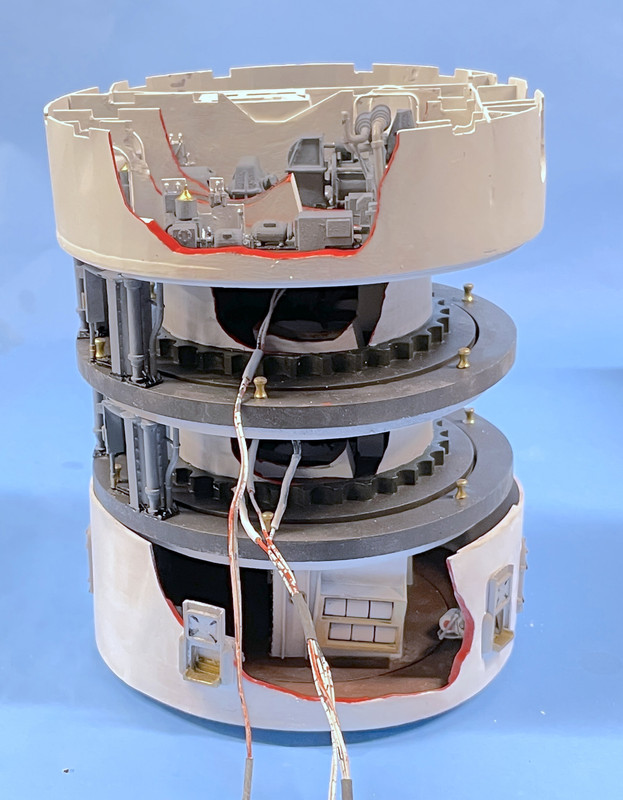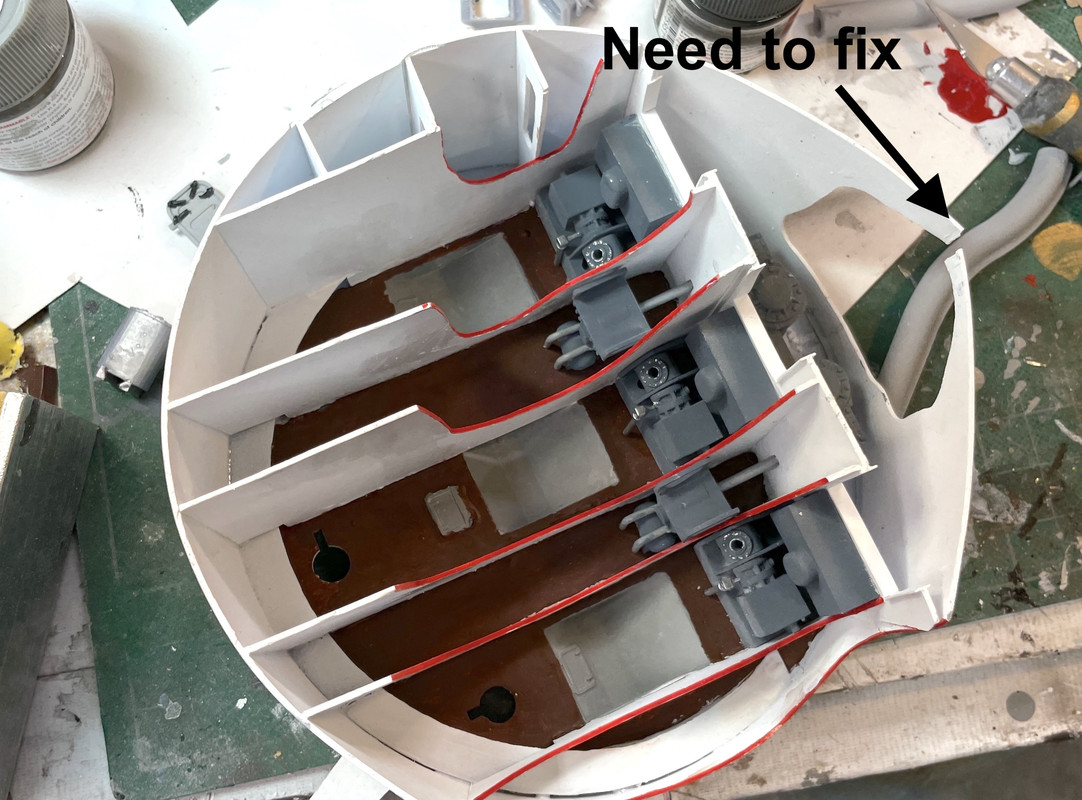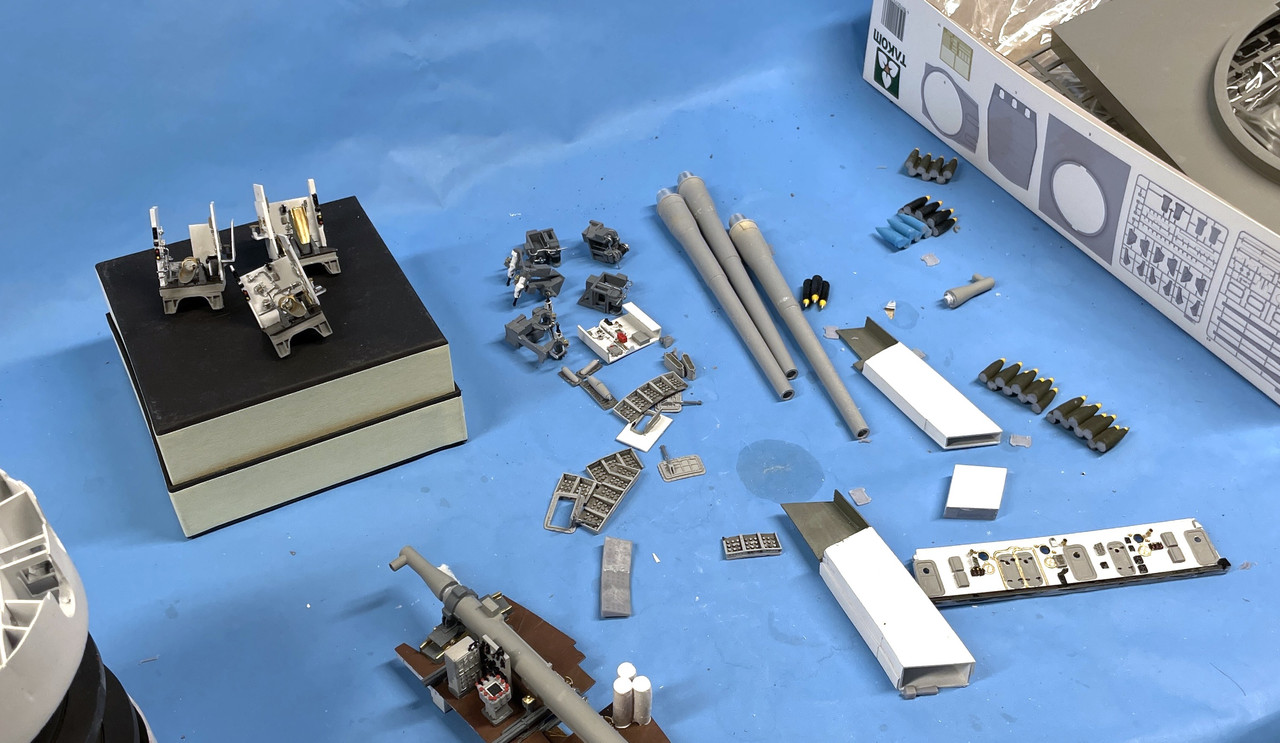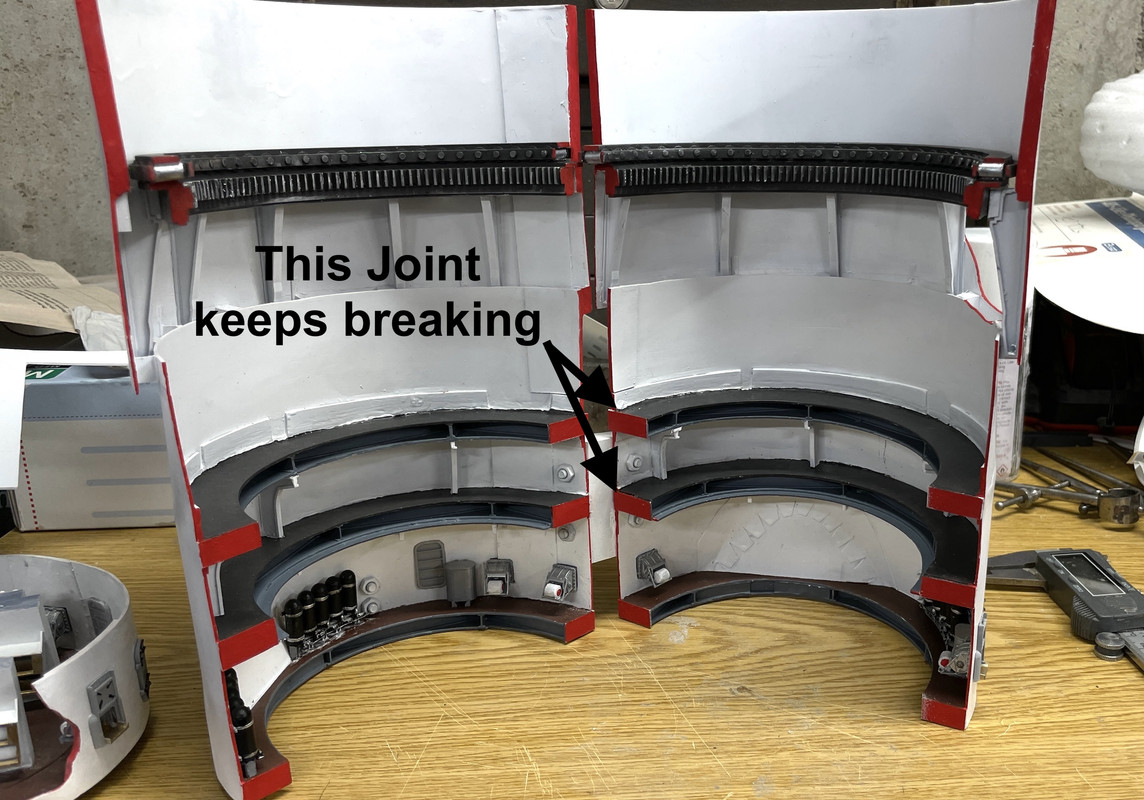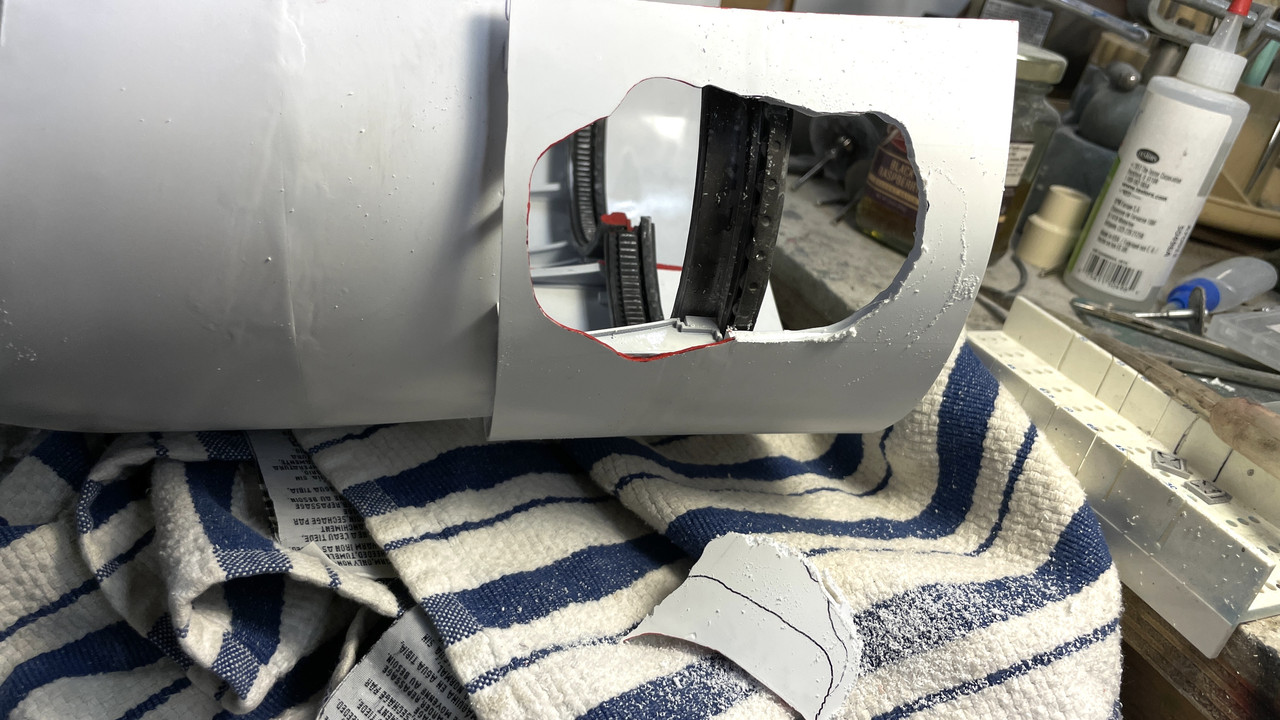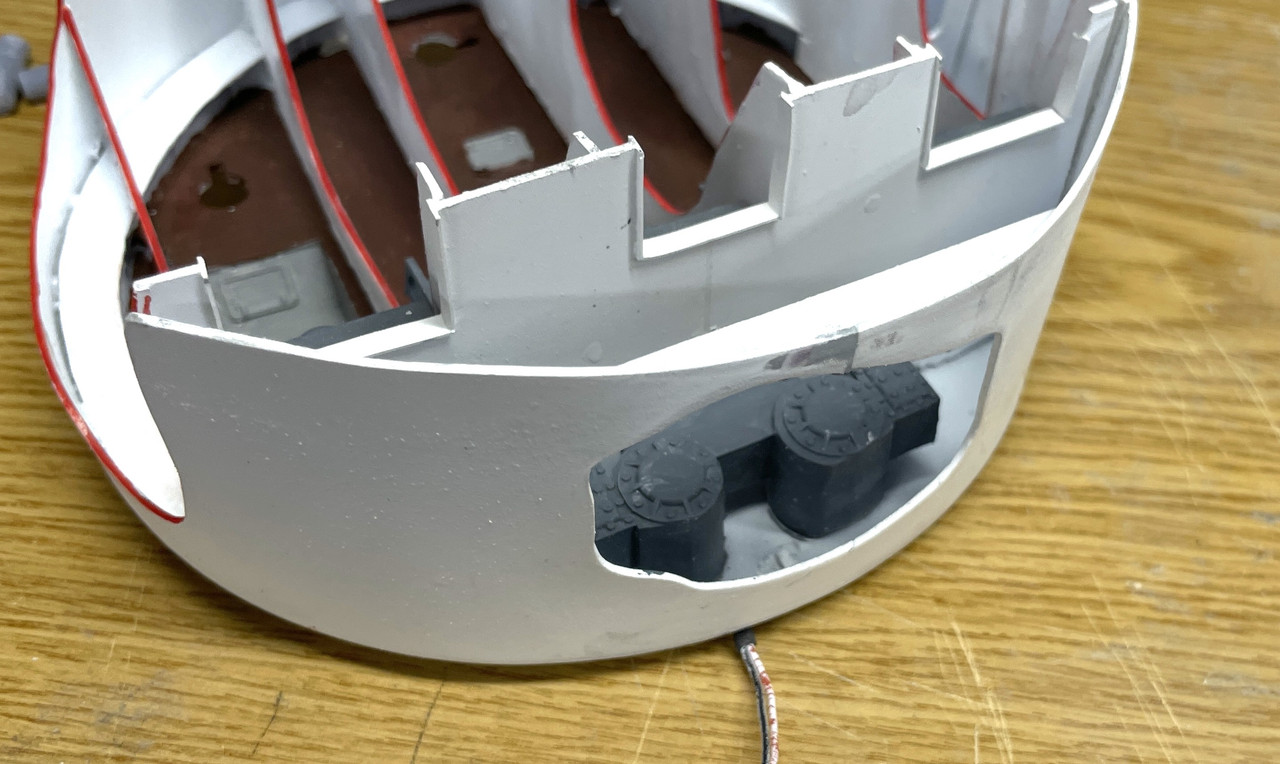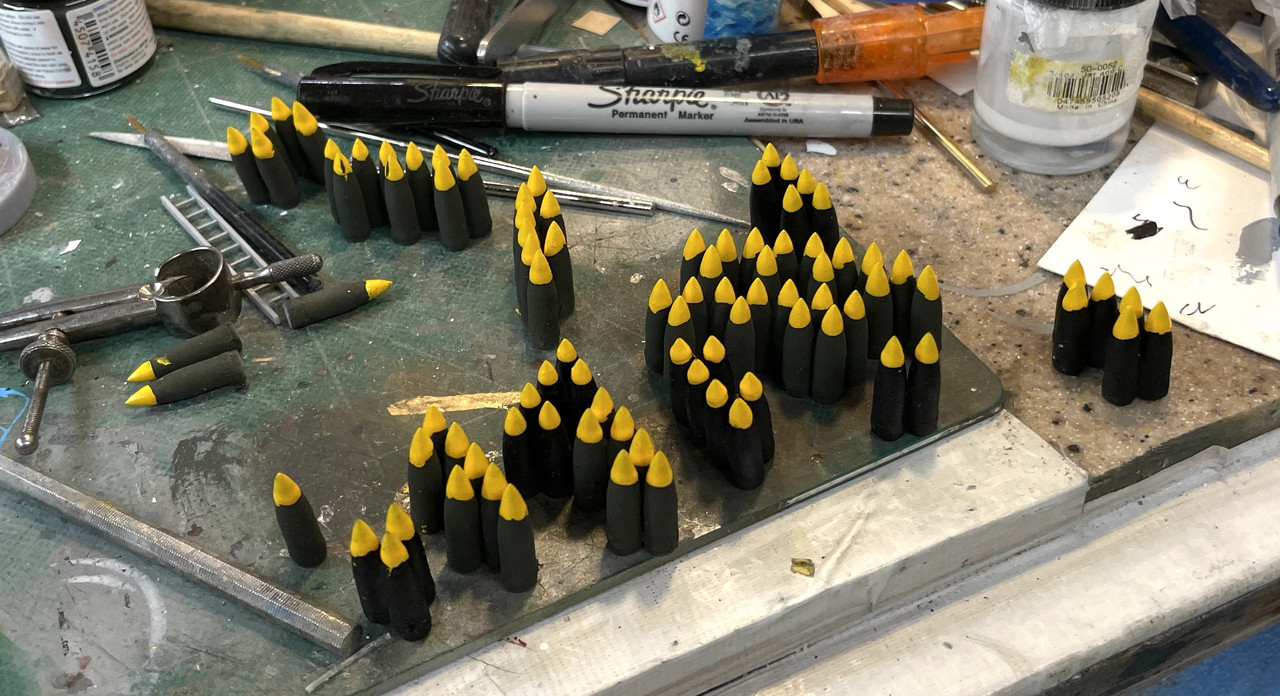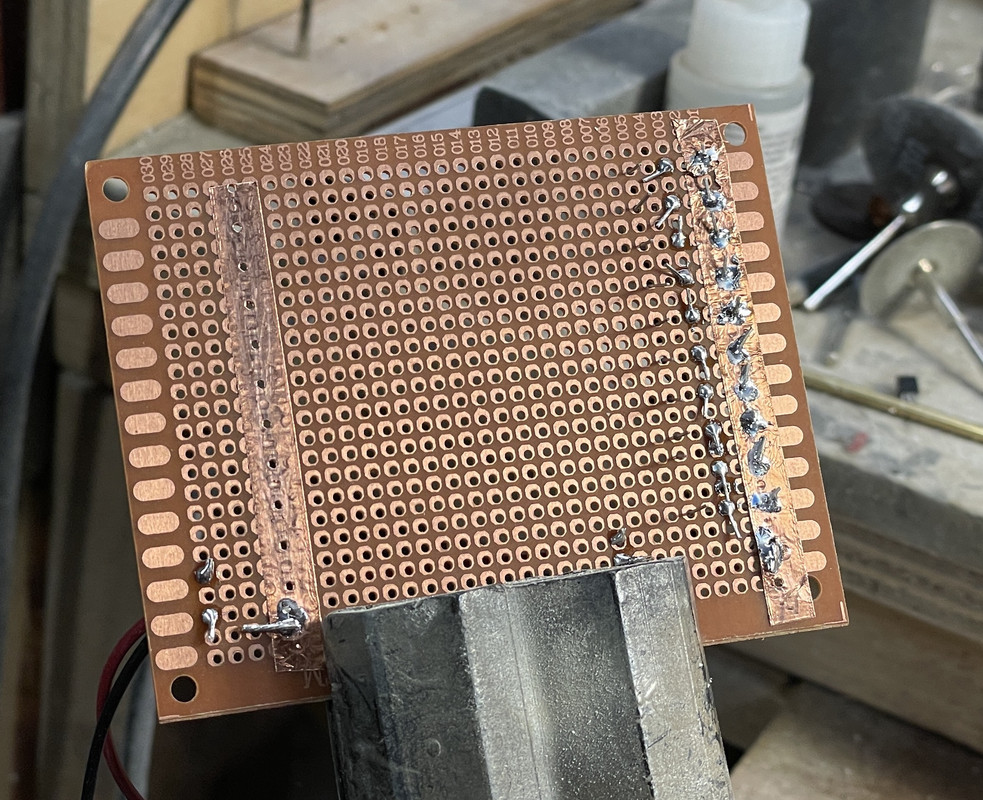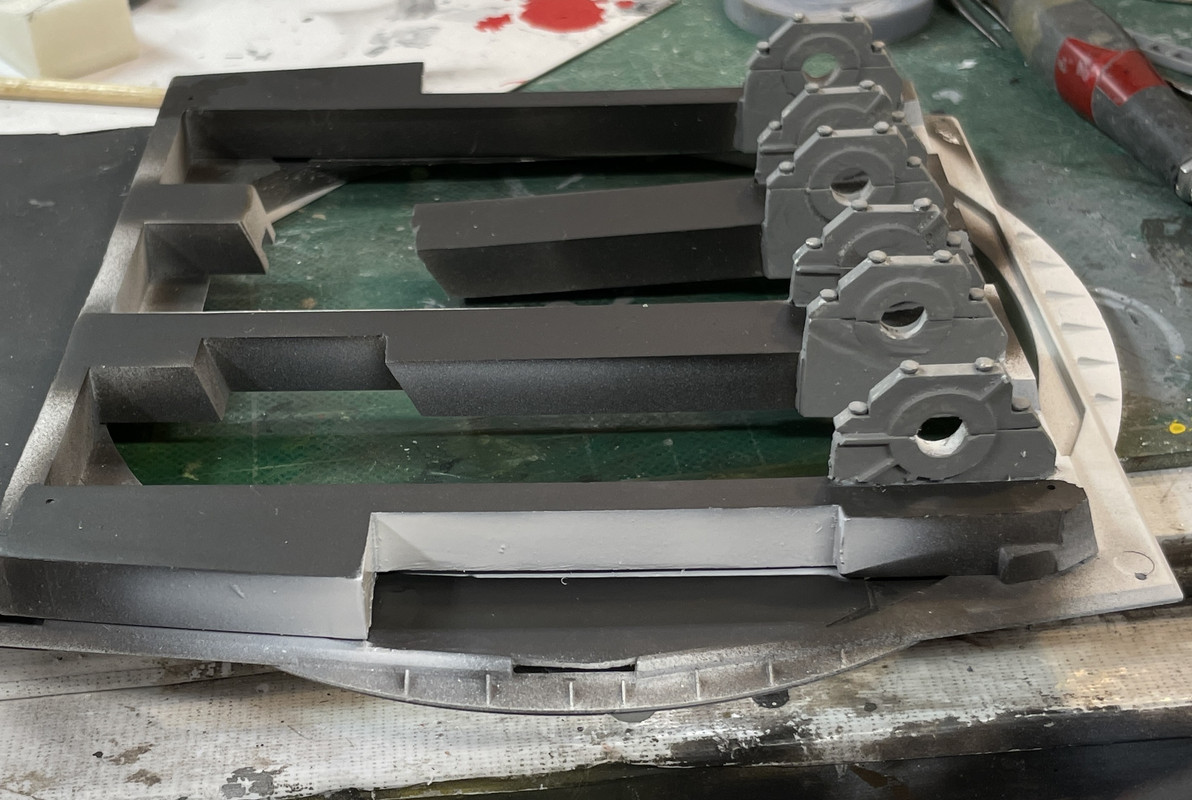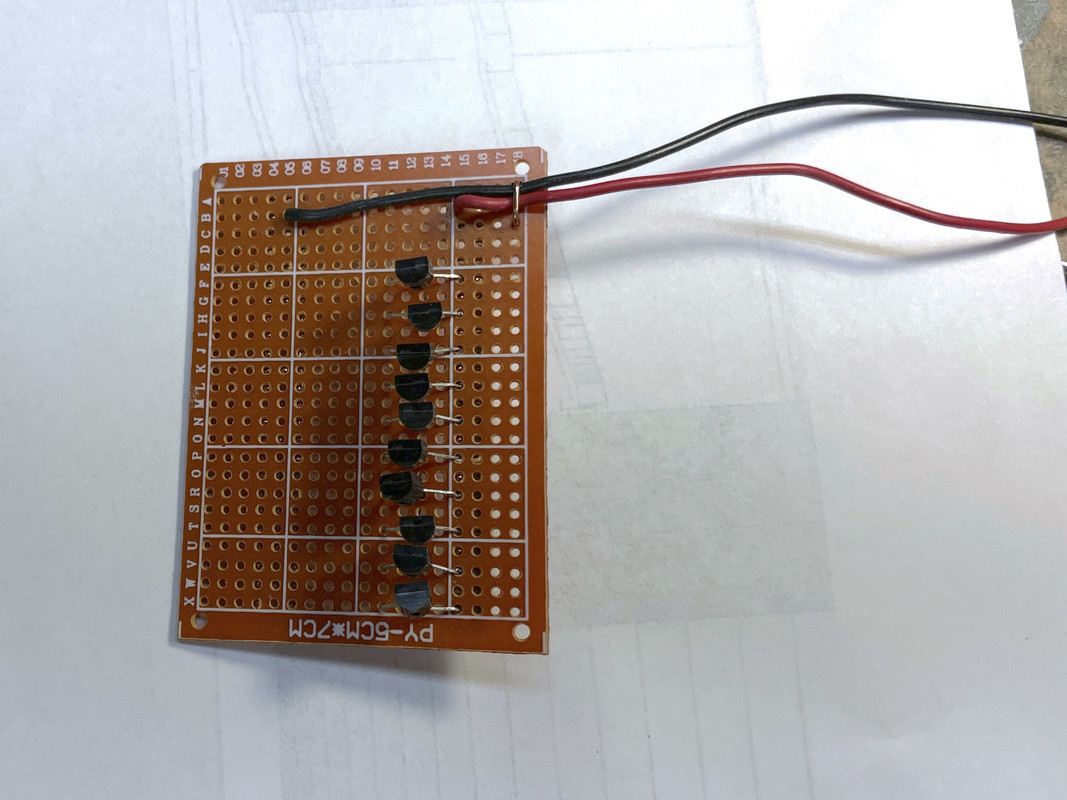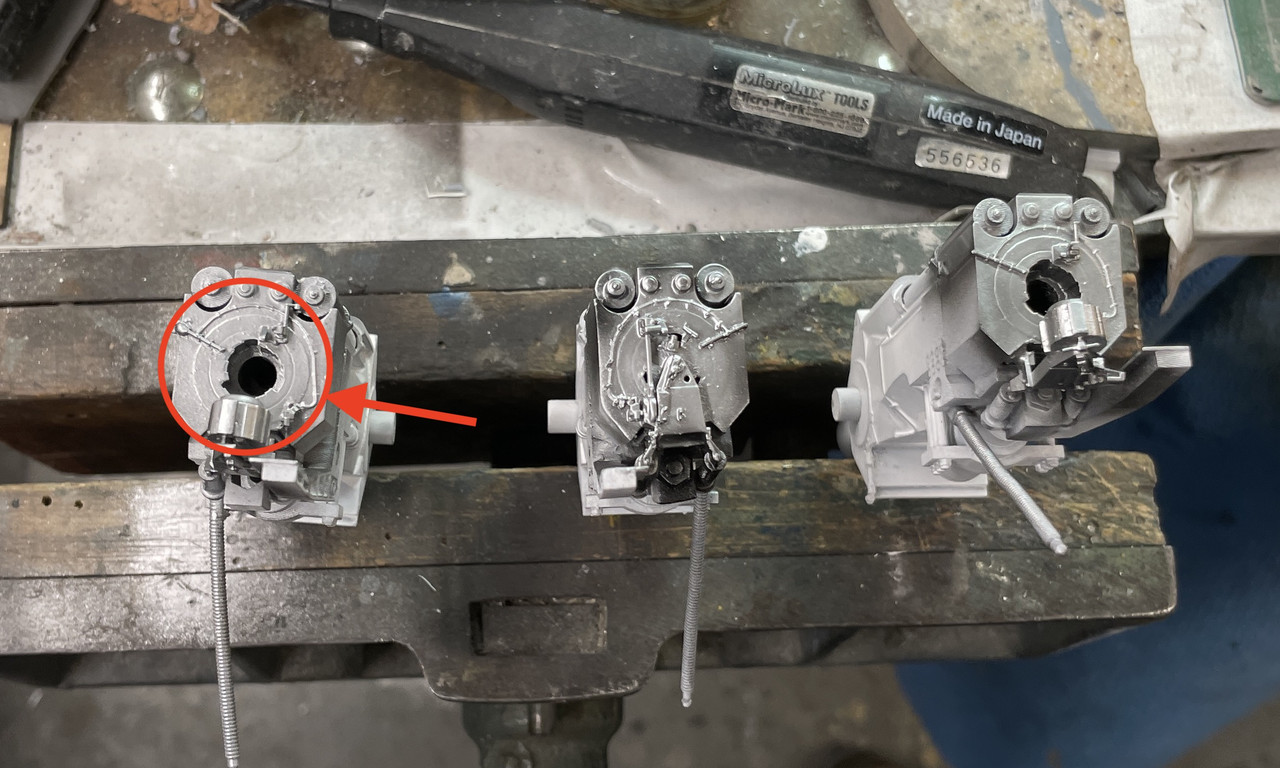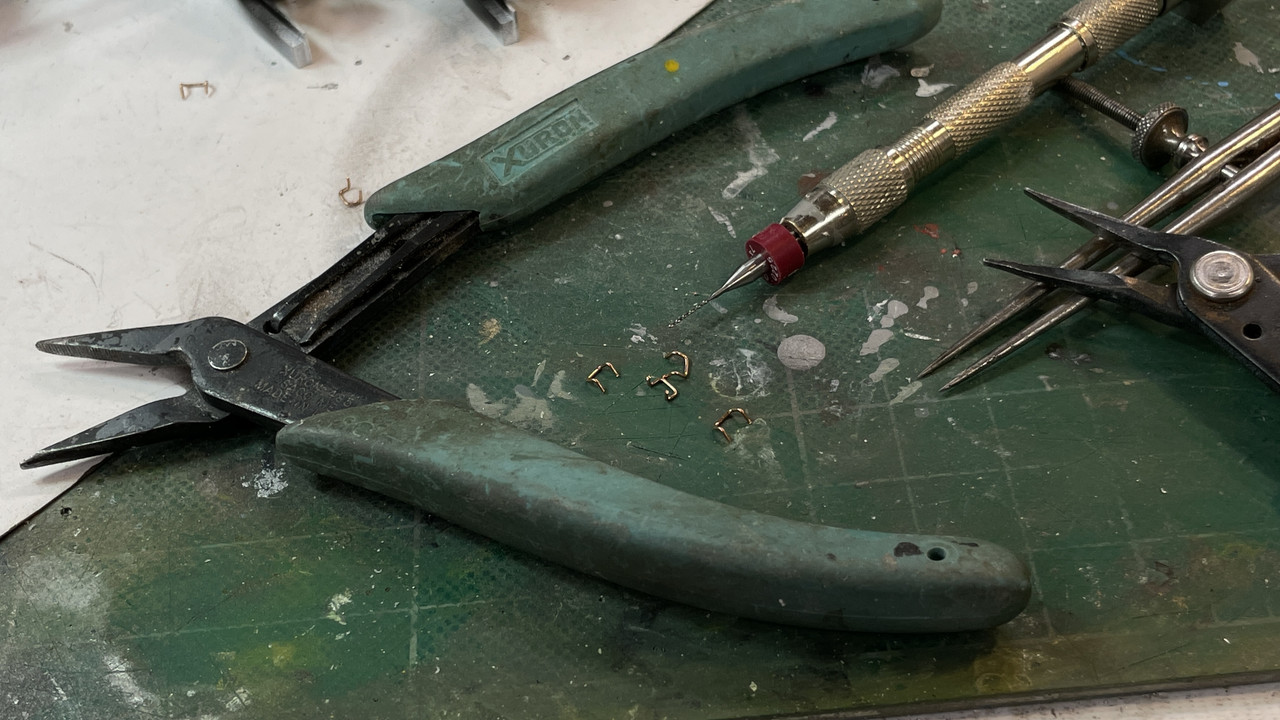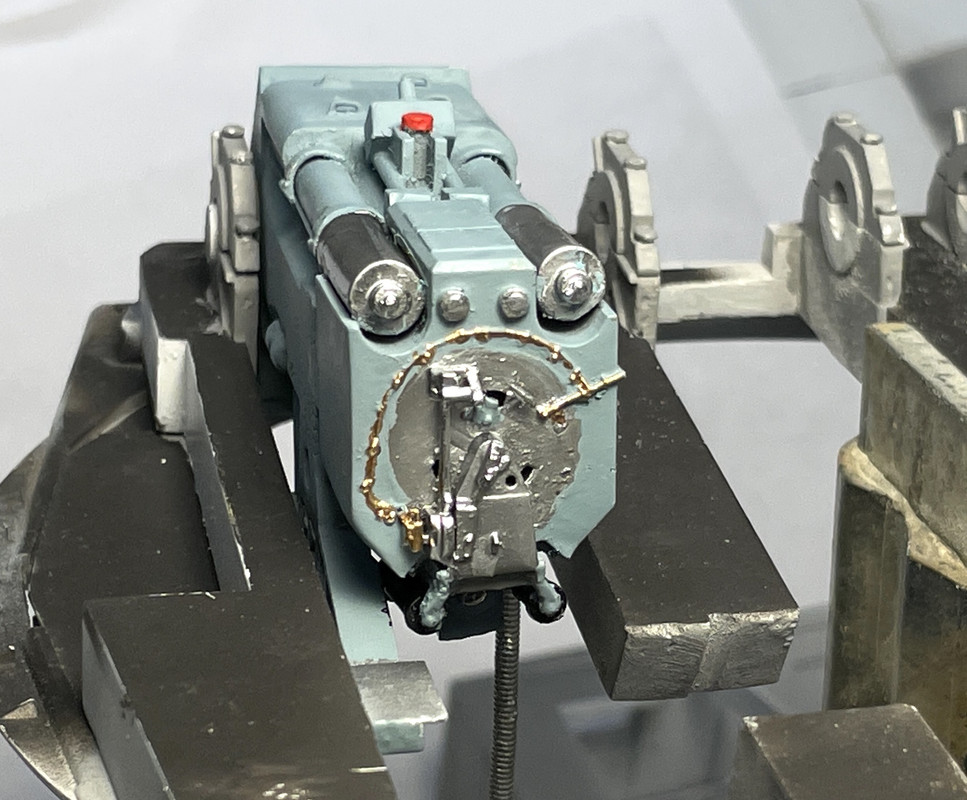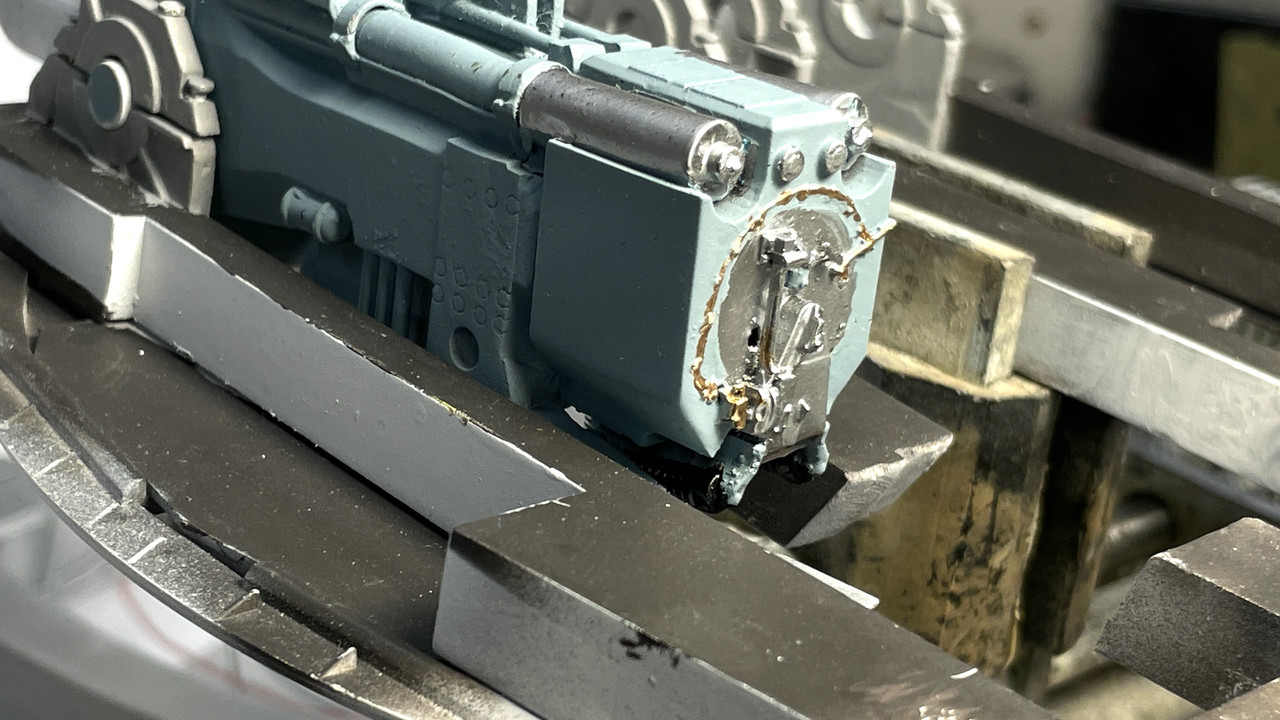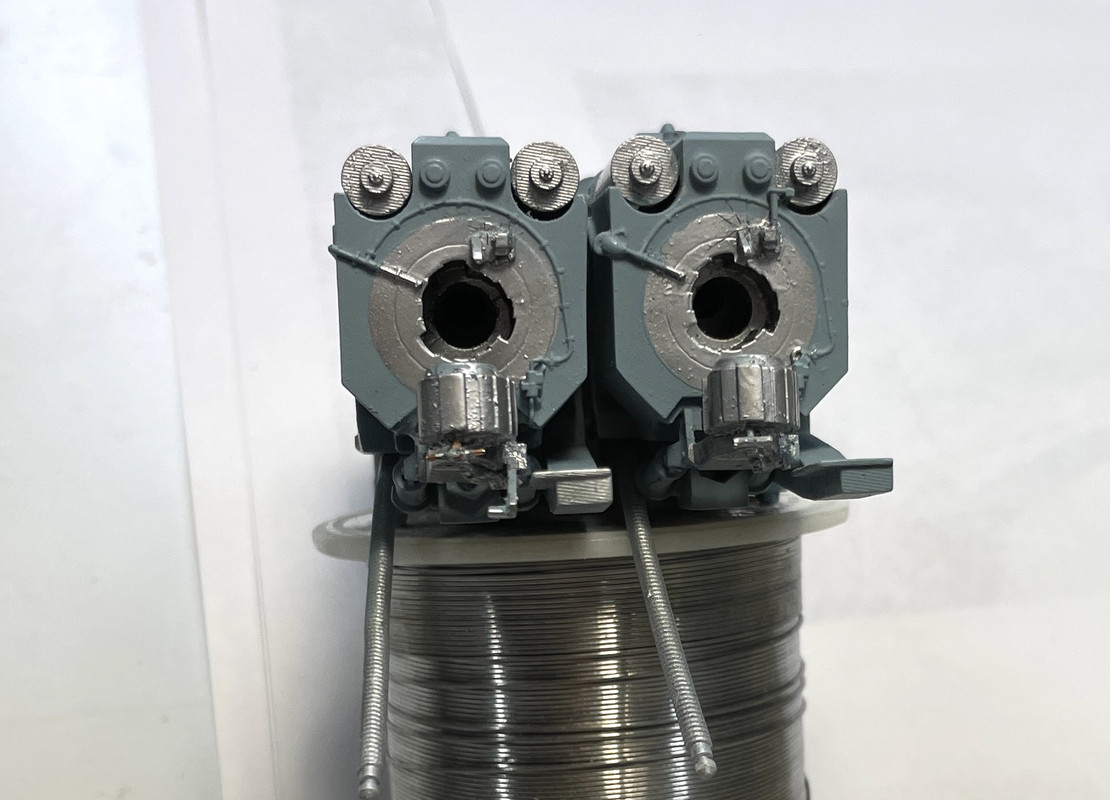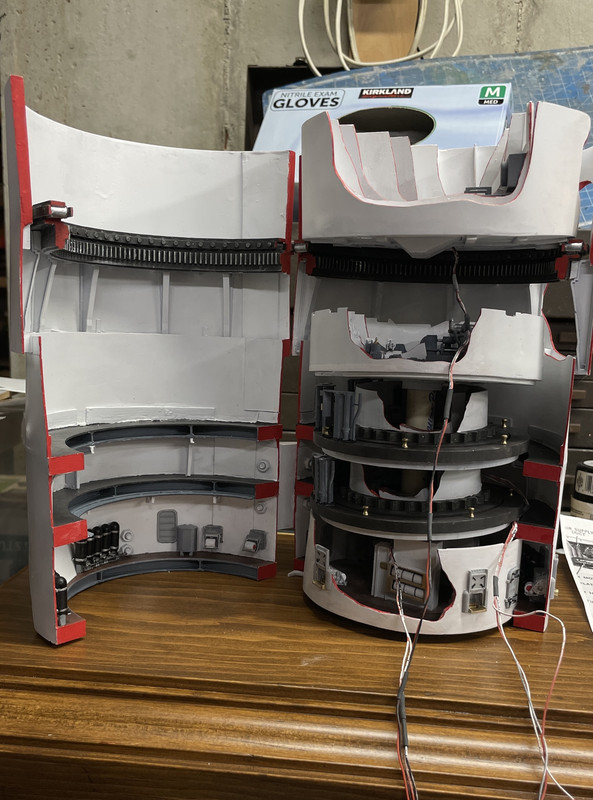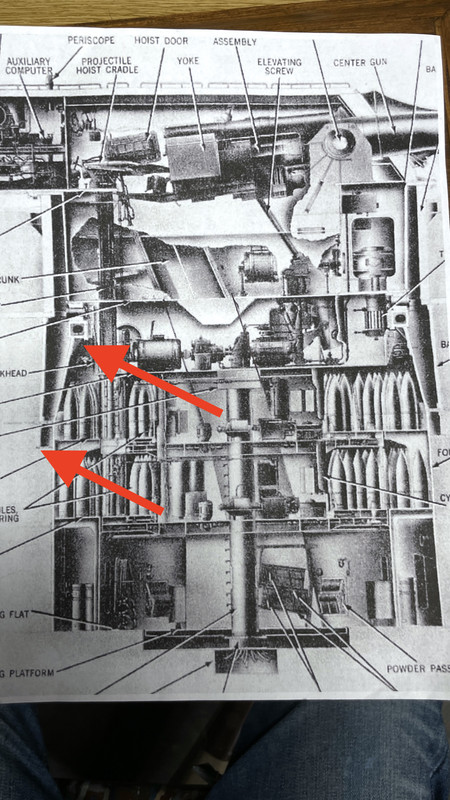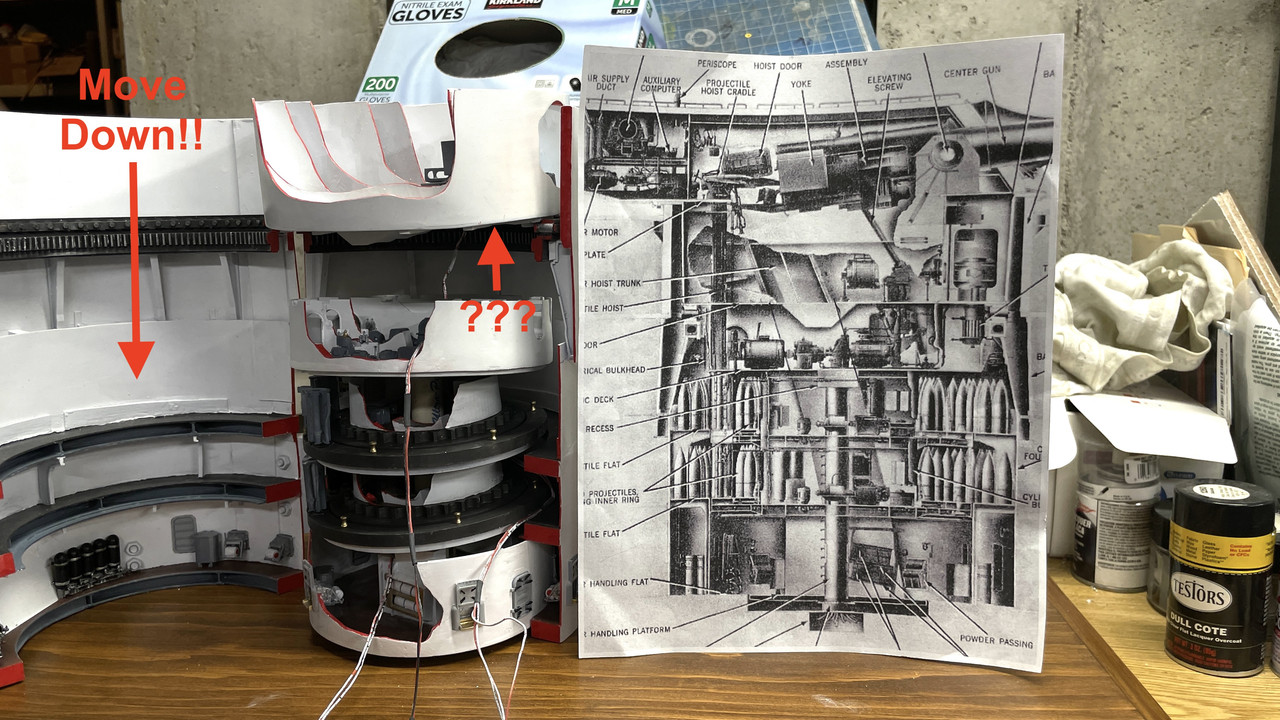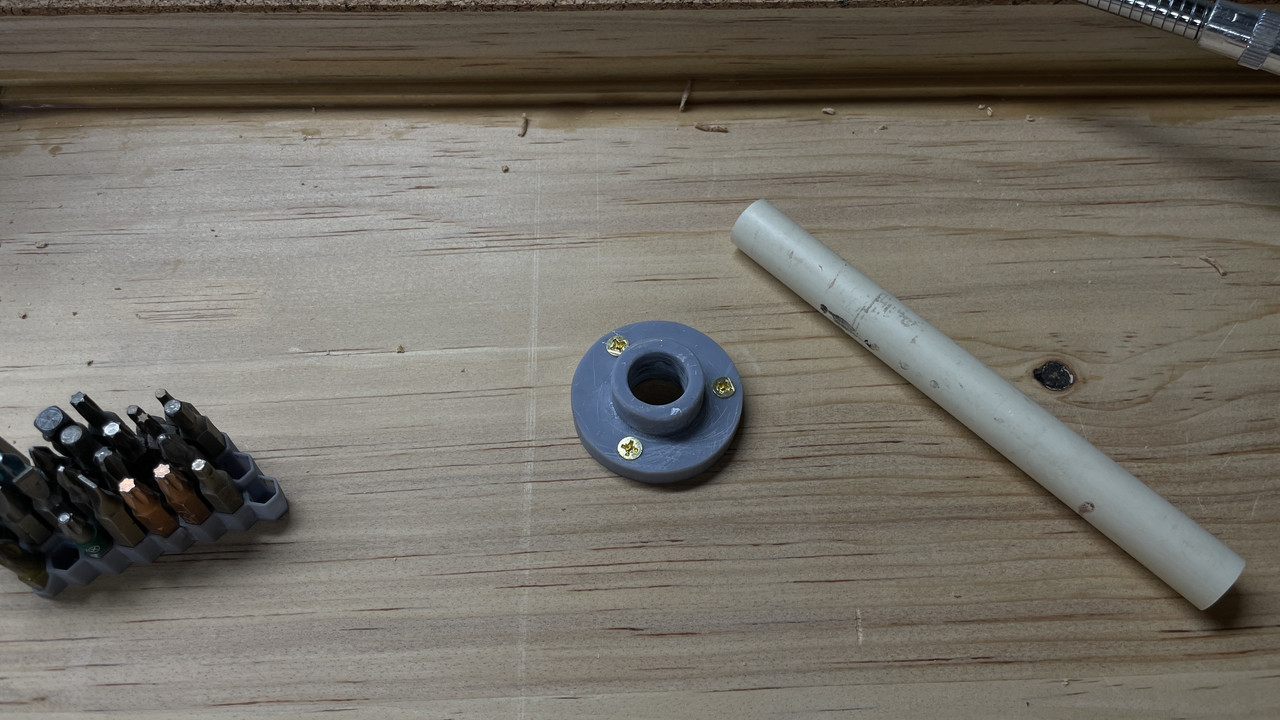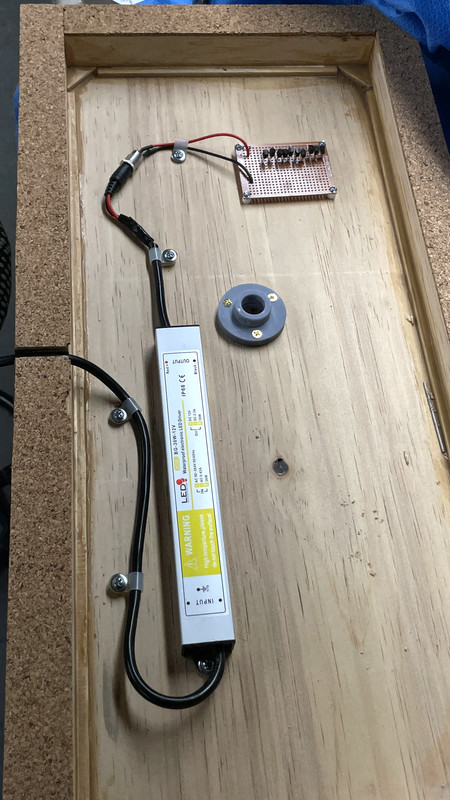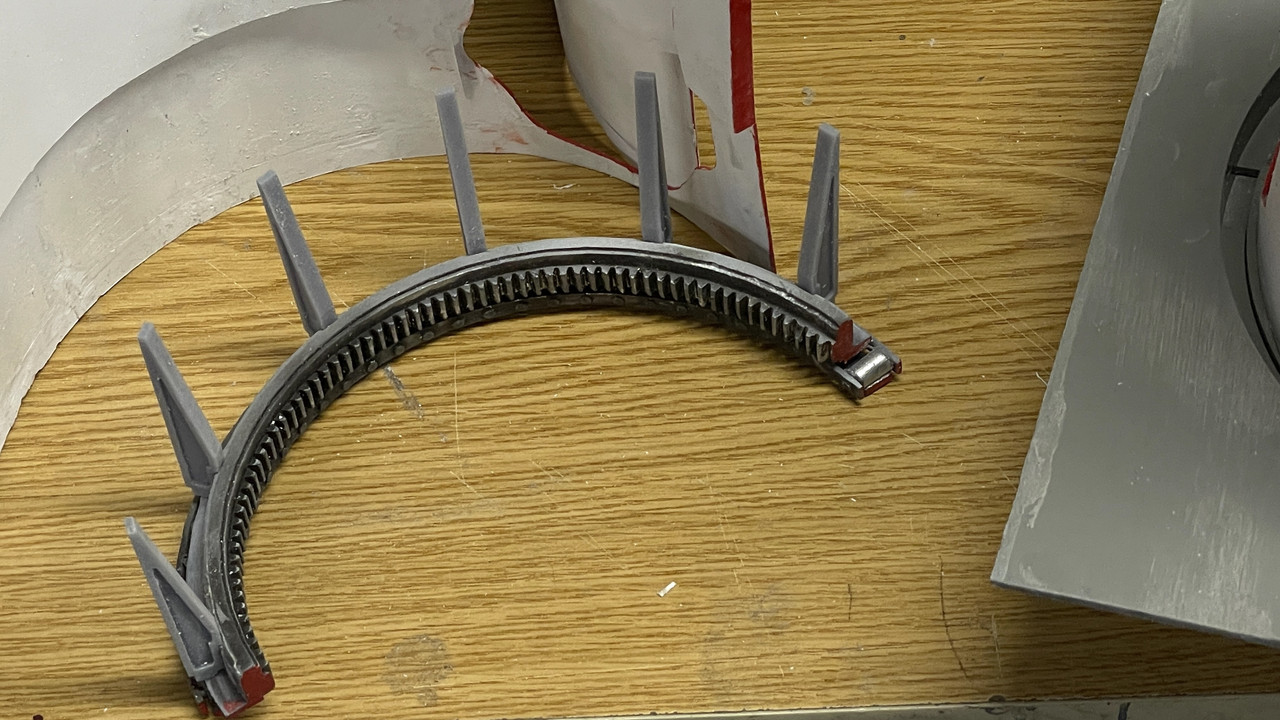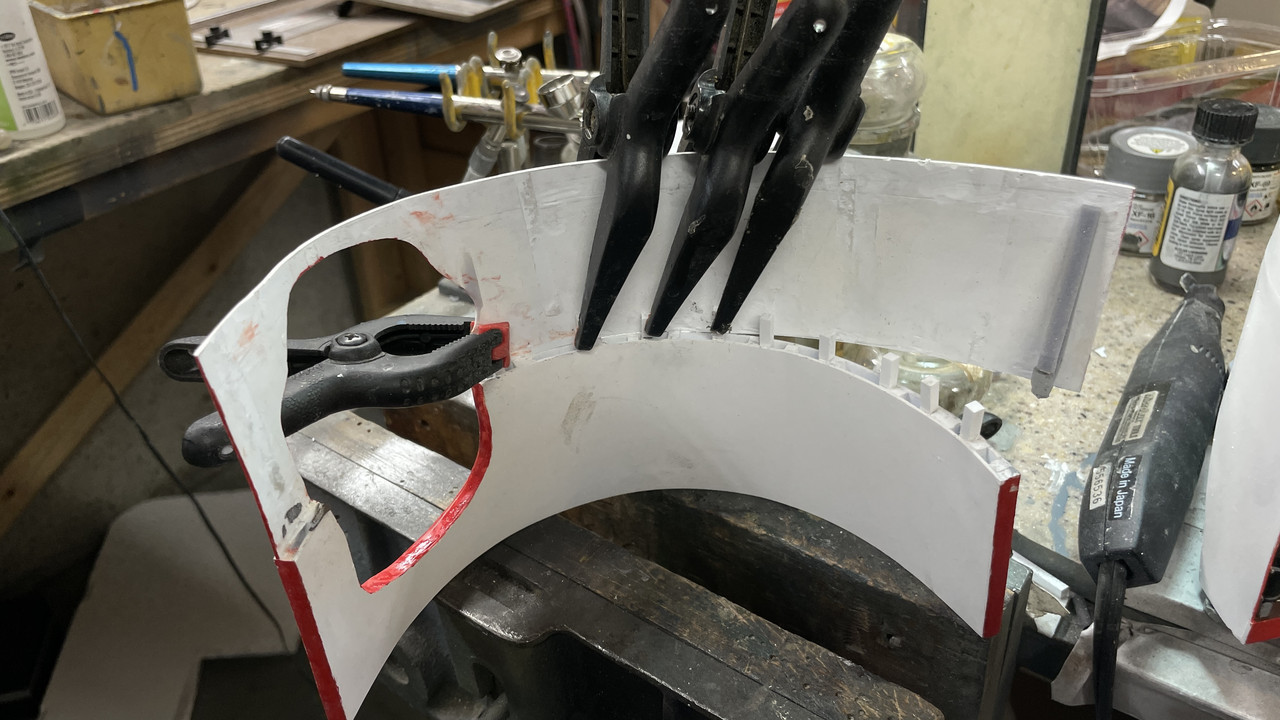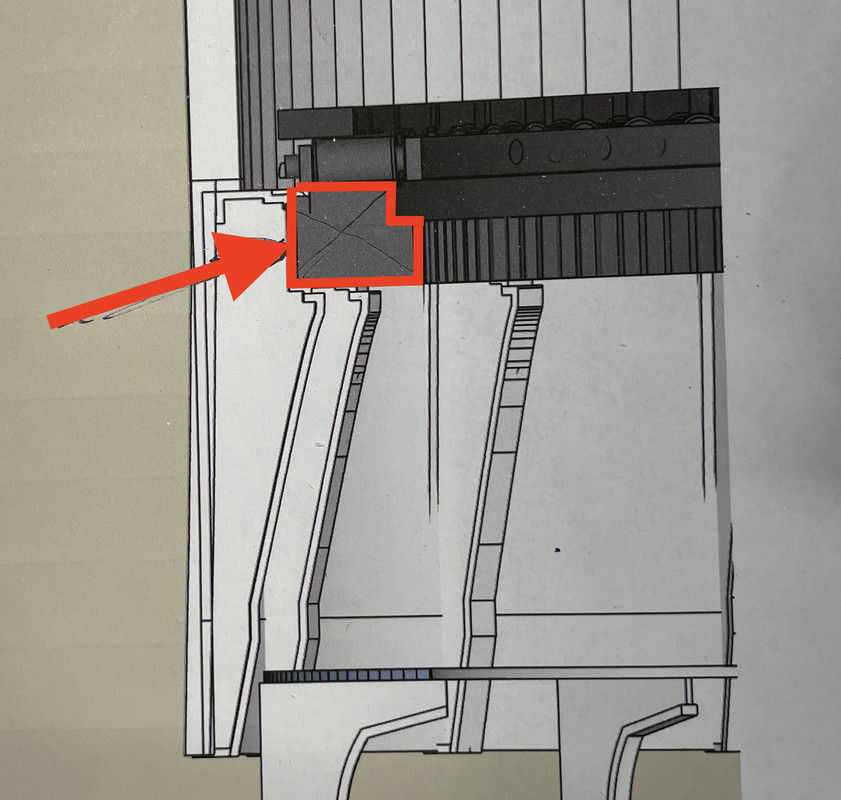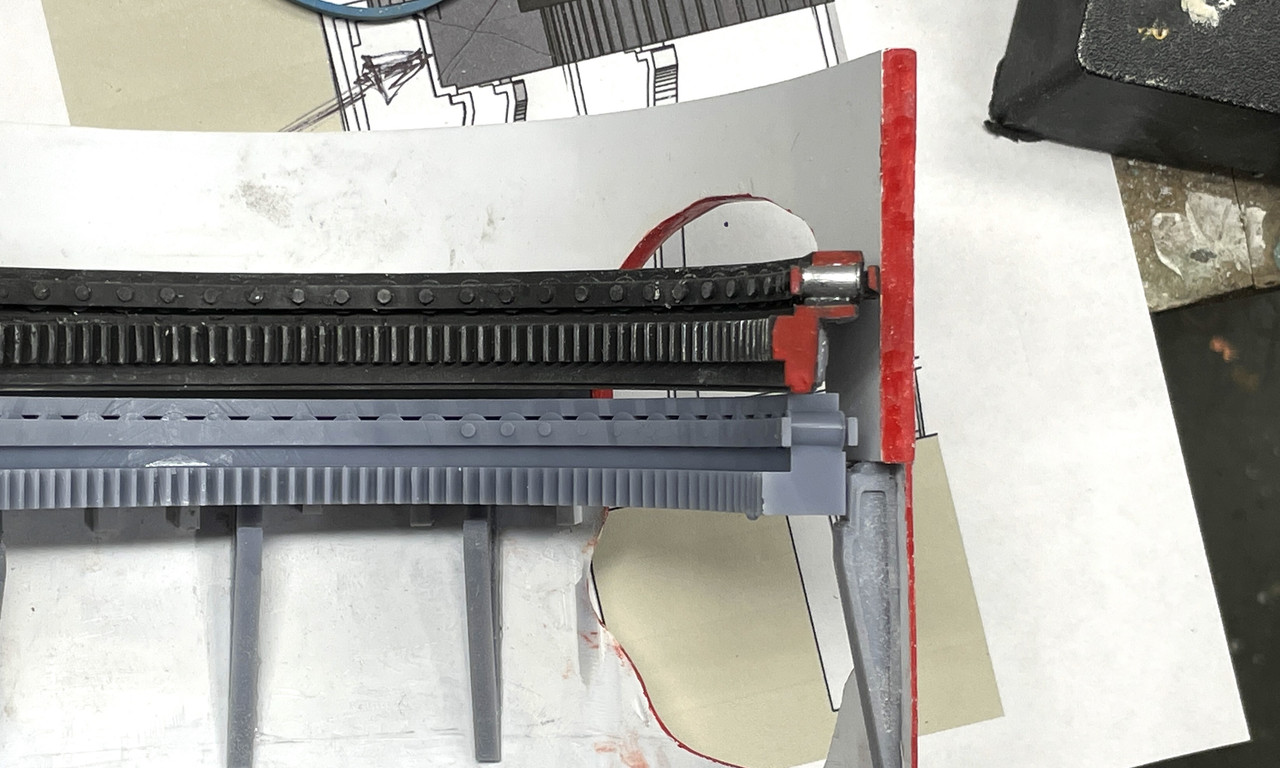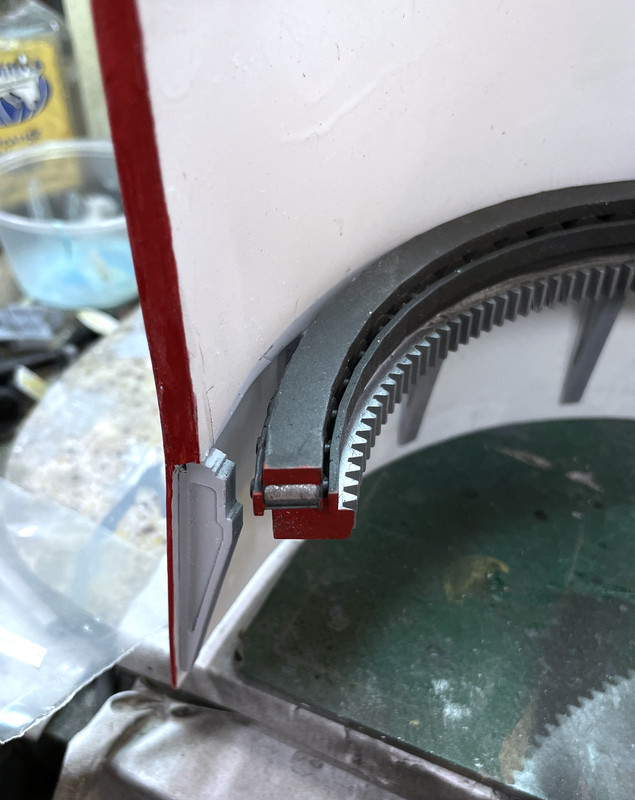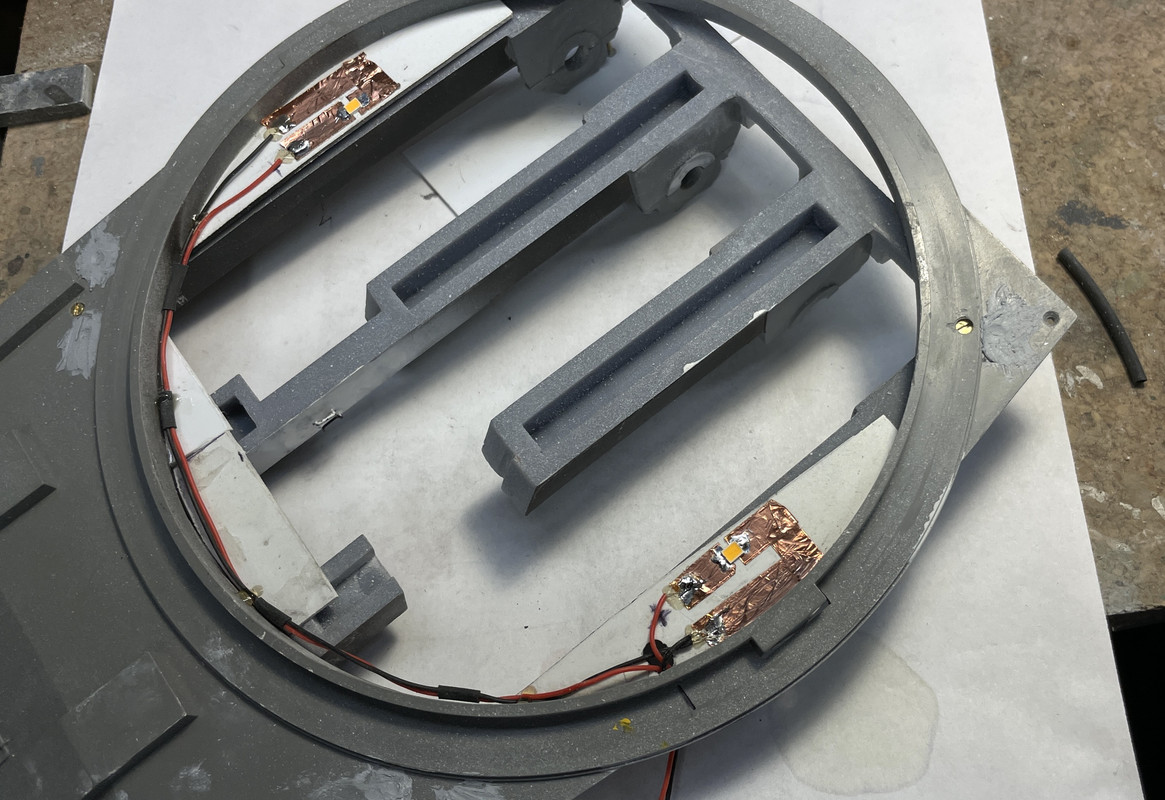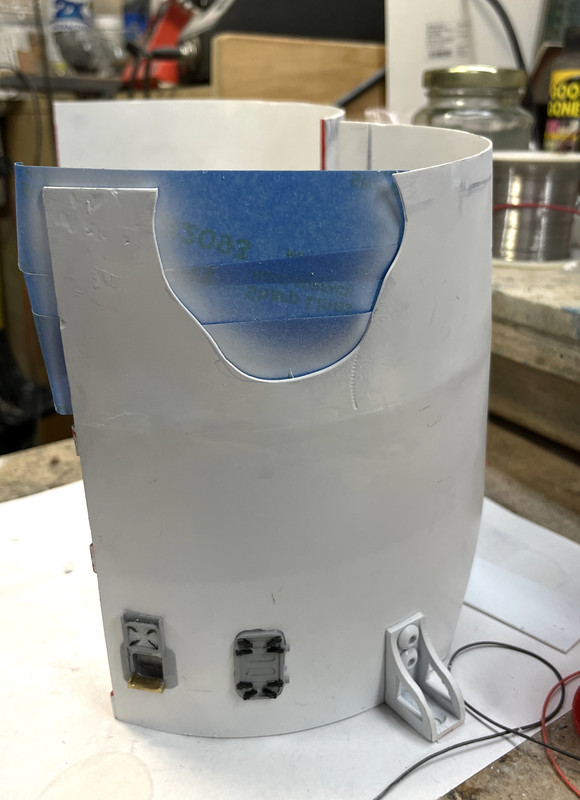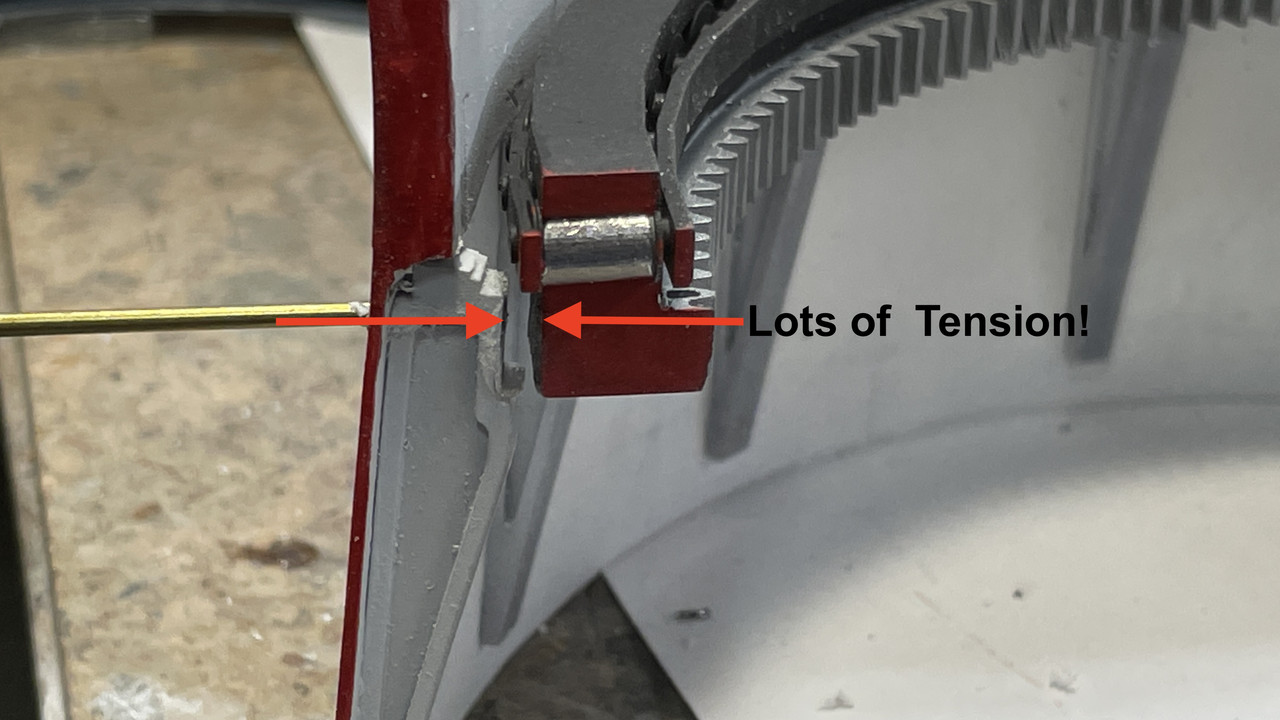It sure is!
Author’s note: This was yesterday’s post that I forgot to transmit due to being interrupted by some TV shows.
With another long session, things are accelerating. Once all the stuff is painted (almost), it’s an assembly job and, unlike a modern plastic kit, these parts contain all the details in a single piece. All that work was done in the drawing phase.
I wanted to simulate some glazing in the portholes and bought some Microscale Kristel Klear, but the stuff apparently kicked. This is what I was greeted with when I opened the brand-new bottle. It was just a pile of thick glop that was not capable of making any windows.
I then resorted to using Bondic. it works, but it has to be applied really thick before it will bridge the space.
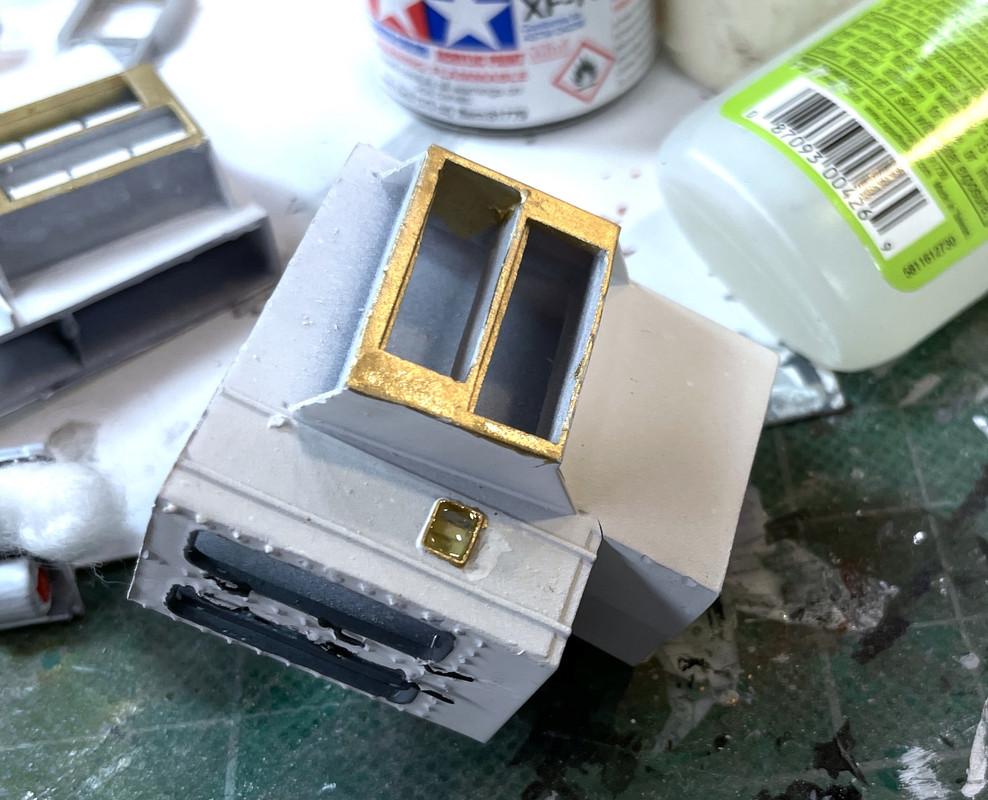
I finished the rotating portion of the powder flat with the gluing in of the remainder of inner and outer powder scuttles and hatches, plus the two powder hoist base pieces. After trial fitting this deck with the projectile flat above, and found that the powder hoist bases were too tall by about 1/8". Again, it was a bit stressful to hack that much material off these parts that were already CA’d to the floor.
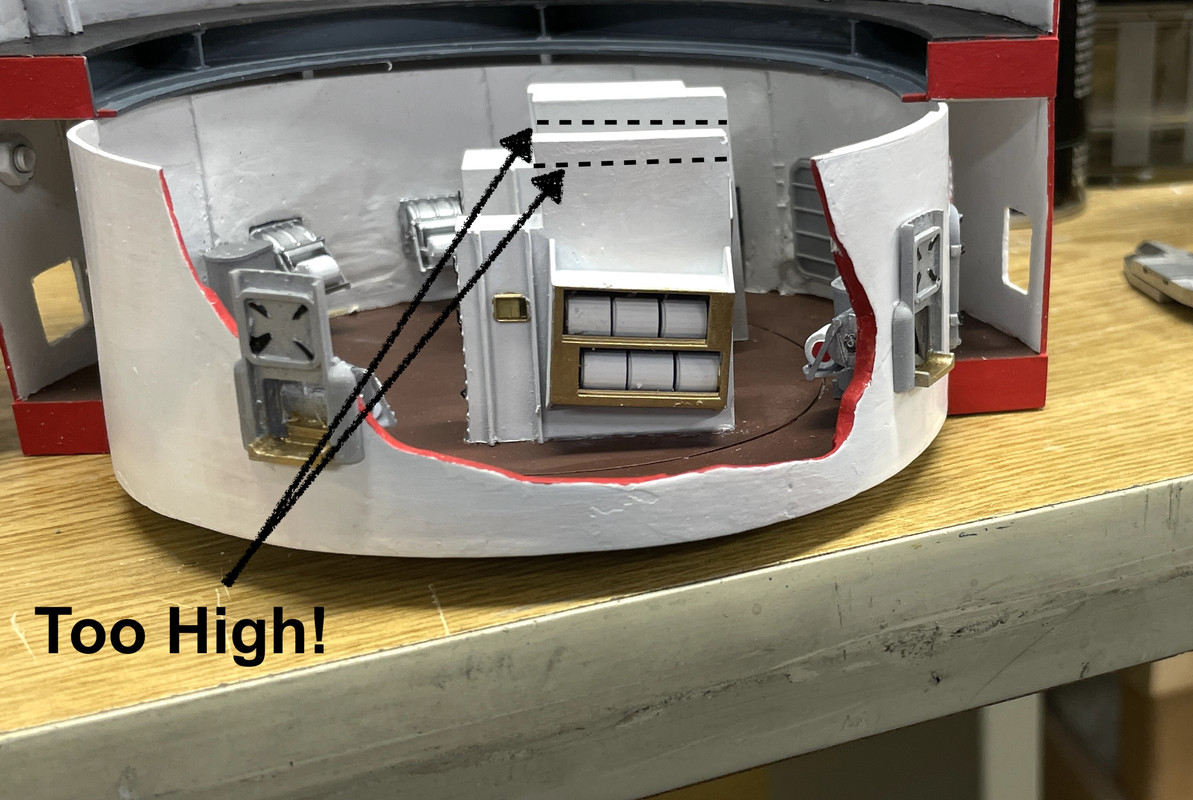
I used the Dremel with a big abrasive cut-off wheel that had enough radius to cut at least halfway across. I measured the exact amount of offset I needed and scribed this with the calipers. I then put on a dust mask and went at it. Results were good and the two decks now nestle together as they should.
I mounted the quench tanks with 1/32 phos-bronze pins to make sure they were secure.
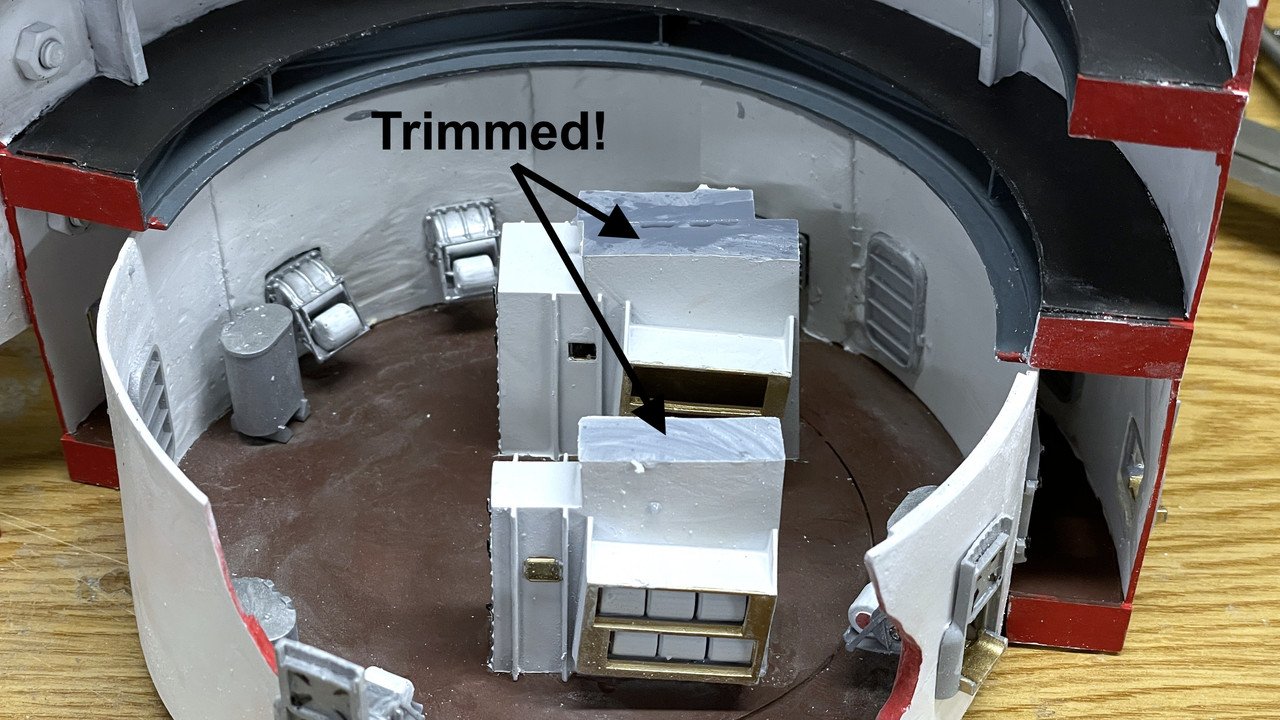
I couldn’t help but to put a projectile flat on top and light it up. I’m happy to see that the layers of paint on the walls are nice and opaque and aren’t letting any light leak through.
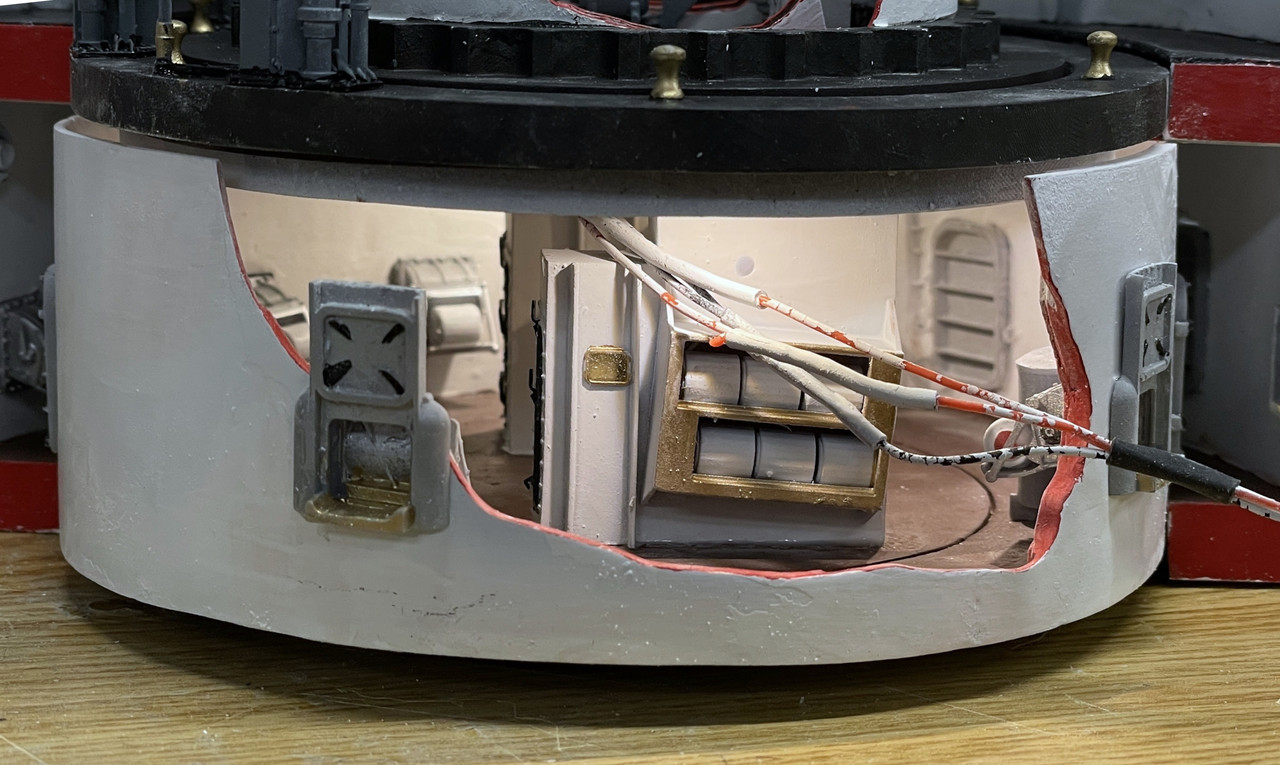
Of course all those wires will disappear down the central column.
I then did the same thing to both projectile flats by finishing the painting of the gypsy heads with brass. I again used the #11 to trace around the glue masks so they wouldn’t pull all the paint off during demasking. Everything dropped in where it was supposed to including the six projectile hoists.
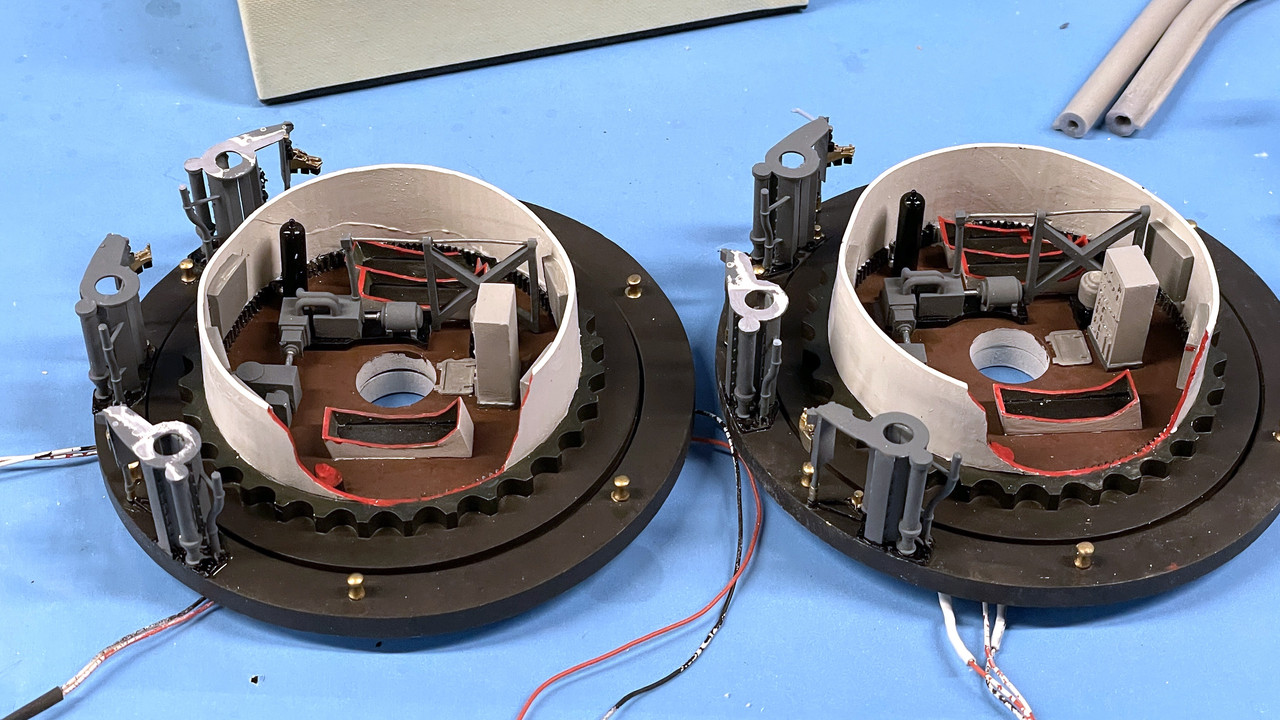
Lastly I put the hatches and scuttles on the outer shell. I ran out of inner scuttle parts and had to print some more. I never, ever delete the slicing files. The ChiTuBox Pro lets you save the set up which loads very quickly and can be worked on immediatel.
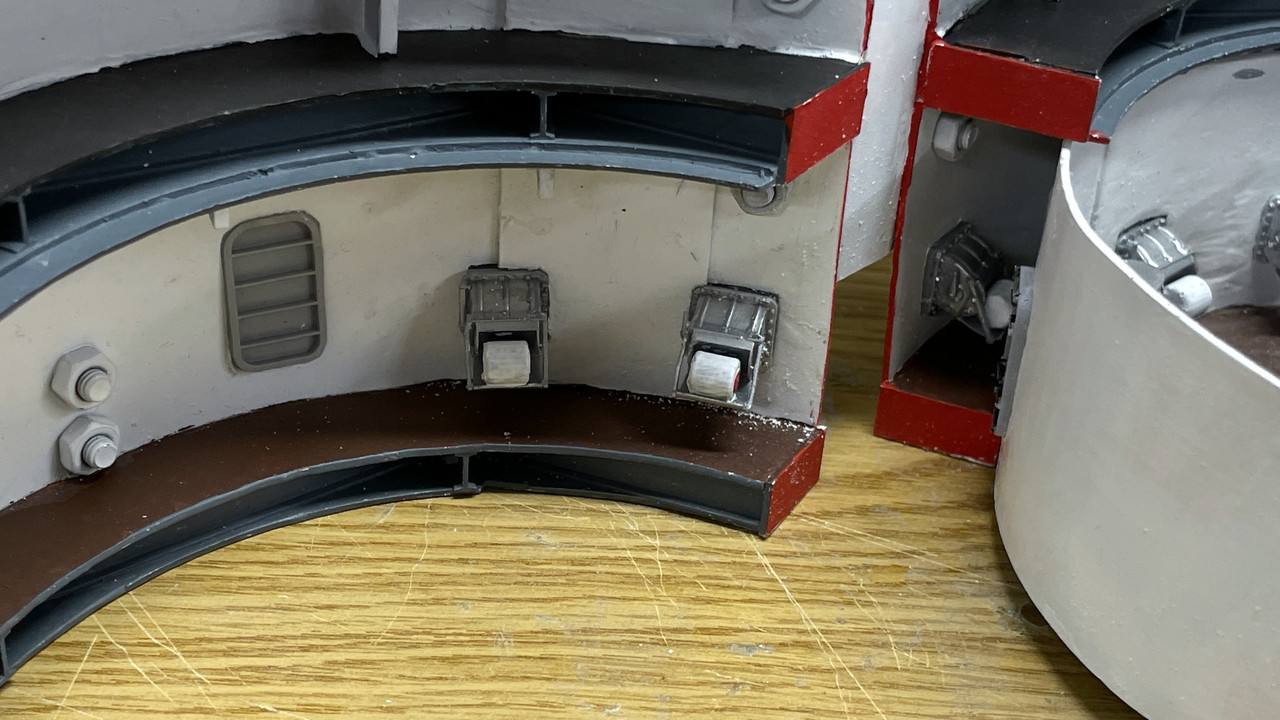
Here’s where the air bottles will go. They’re not glued in…
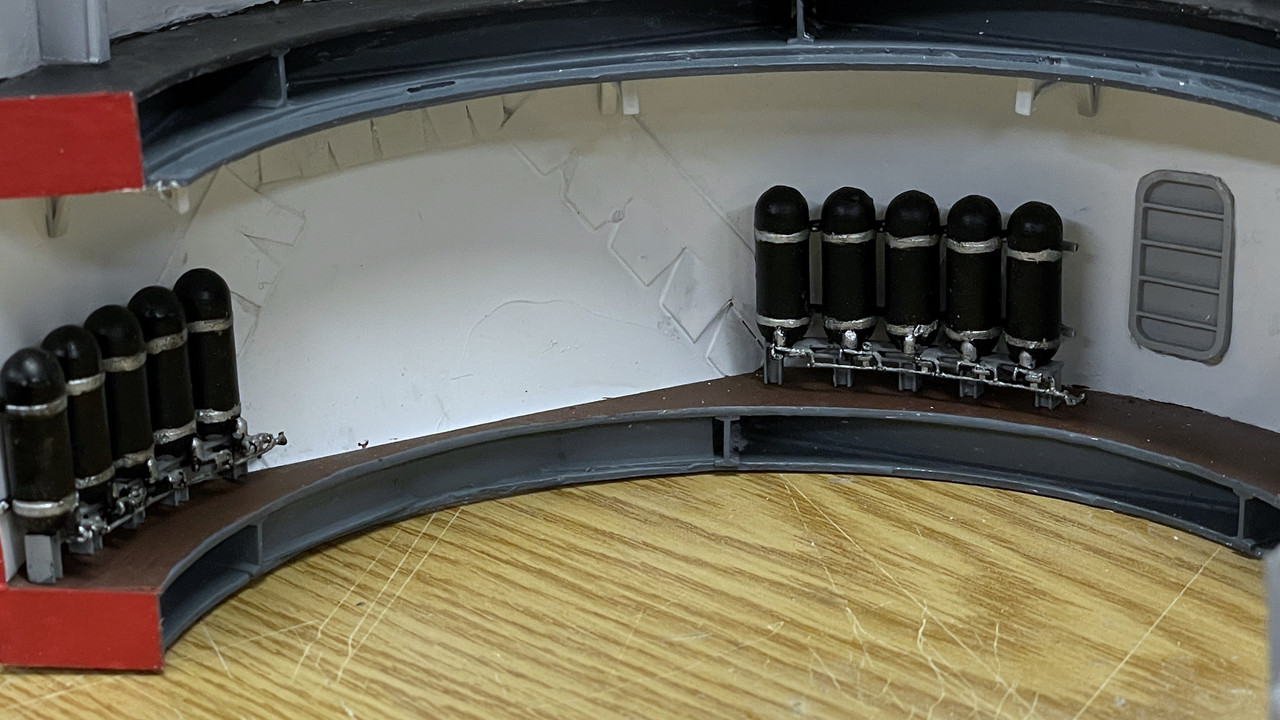
And here’s a passal of scuttles ready for cleanup.

One last thing… I finished up the reprinted rear compartments. They look just as I would like.

Up next is today’s work.
